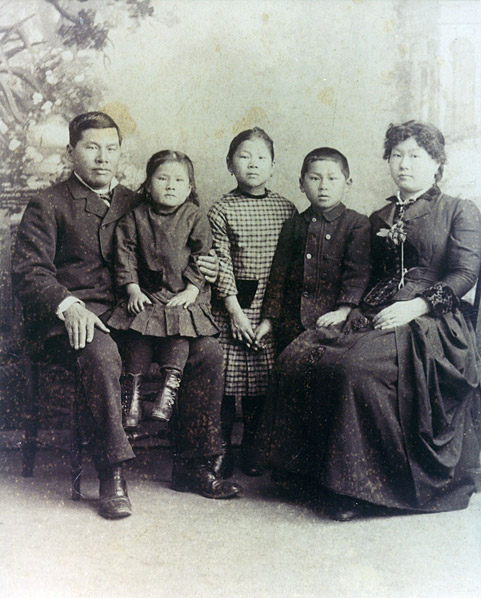At one end of Spofford Alley stood a community mural, and one of the phrases on top is "Tape vs. Hurley". What you probably do not know was this was the EARLIEST court victory against school racism dating back to 1885, 70 years before Brown vs. Board of Education in Topeka, Kansas, and 11 years BEFORE "Plessy vs. Ferguson" (1896).
 |
| Mural at Washington side of Spofford Alley, Mary Tape, Tape v Hurley 1885 courtesy author |
Joseph Tape was born in Guandong, in Southern China. He came to San Francisco, as a teenager in 1864, and worked as a servant to a dairy farmer, and steadily moved up to delivery wagon driver. He met and married Mary McGladery in 1875. Mary originally came from Shanghai as a teenager a few years after Joseph did, and MAY have been trafficked, but was rescued and placed with the Ladies' Protection and Relief Society's shelter, and chose to take her caretaker's name as a symbol of her rebirth. When they married, they both took the German surname "Tape".
Together, they became very well off. Joseph had a knack for transportation, and his delivery business quickly thrived. With his proficient English, he also acted as an interpreter for the Chinese Consulate in San Francisco. Mary took up painting and photography and was successful with both. A reporter then was apparently surprised that a "Chinese girl" was able to pick up those things. The couple lived in the Black Point neighborhood, which is today's Cow Hollow neighborhood, with white neighbors and never had any trouble with them.
The pair had four children, three were in this picture:
 |
| The Tape Family, from Left, Joseph, Emily, Mamie, Frank, and Mary Tape circa 1884-1885. Gertrude was born later. courtesy Wikimedia Commons |
Keep in mind that San Francisco had a "Chinese School" in Chinatown from 1859 until 1870. In 1871, the school was closed, as the school board decided there is no need to keep educating the Chinese children since they refused to attend (i.e. "low attendance", even though they were the one who changed it to night school with limited hours). With no Chinese School available, and no other school that would admit them, the only way Chinese children can get an education was either from church schools or private tutors.
By 1870s, xenophobia is on the rise, and the Chinese, many of whom kept to their customs, were an easy target. The passage of the "Chinese Exclusion Act" of 1882 by US Congress marked the height of xenophobia, and the Act was not repealed until 1943 when China was needed as an ally against Japan.
In 1884 the Tapes decided their oldest daughter, born in the US, and thoroughly westernized, should go to a primary school. So they tried to enroll her at Spring Valley Primary School, the closest to their home. They were turned away by Principal Jennie Hurley, citing the existing SF School Board policy of not admitting "Chinese children".
The Tapes first tried to negotiate, asking for reasons, and even added a letter from the Chinese Consulate. When the school board did not budge, they warned that the school board was breaking the law and will seek legal remedies. When the school board still chose not to admit Mamie (allegedly after much discussion), they sued the School District and the Principal... and won in district court.
The school district appealed all the way to California Supreme Court, but the Supreme Court also affirmed the lower court's decision: the law only excluded Indian and African-American students from public school, and made no mention of the Chinese students. Thus, the school board had no legal reason to exclude the Chinese students
With no further appeals, the school board instead, pushed the California legislature into passing laws that established a separate segregated educational system, which quickly passed. And thus "Chinese School" was reborn. The school was later renamed "Oriental School" in 1906 so they can also send other Asian students there as well. The Tapes protested, and once vowed NEVER to attend such a school, but eventually enrolled Mamie in the Chinatown Chinese school. This was the birth of the "separate but equal" segregation doctrine that was reaffirmed a decade later in "Plessy vs. Ferguson" (1896).
The Tapes eventually moved to Berkeley so their children can attend a non-segregated school, and the SF School system would not desegregate for several decades.
Today, the Chinese School is known as the Gordon J Lau Elementary School, the largest elementary school in SF Unified School District.
So now you know a piece of US Civil Rights history that was a part of SF Chinatown.
Comments
Post a Comment